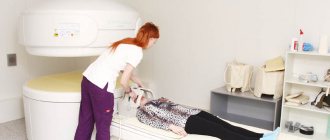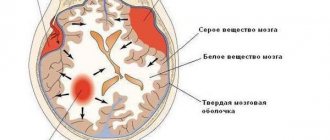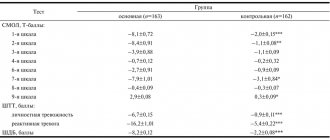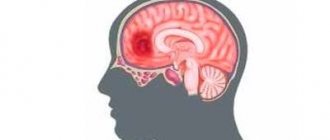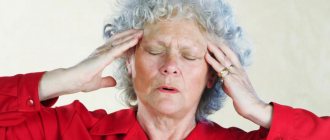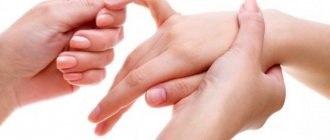First aid for concussion
09.09.2021
One of the most dangerous and common injuries that any person can receive is a concussion. According to statistics, every
The second one encountered this problem. However, the question is not how often this happens, but something completely different - how to determine a concussion .
and also how to properly provide first aid for a concussion .
What is a concussion?
In simple words, it can be described as follows: due to a blow to the head, brain shudders inside the skull and hits its inner walls.
Like a boomerang, the brain the opposite walls, and a kind of counter-attack is obtained. The result of this is cerebral edema ,
its damage and disruption of blood flow.
Several types of concussion are considered depending on their severity. Known: mild, moderate and severe concussion. They don't need
in the description, since everything is clear from their name. People who have experienced such trauma will have a mark that will last a lifetime.
The most common consequences are attacks of headaches, which manifest themselves in old age. If such injuries
happened repeatedly, this can cause Parkinson's disease and memory impairment. Based on such serious consequences, it should be
Take concussions very seriously.
Concussions occur in a variety of ways. From a banal head hit on any object to an accident. The list of them can be endless.
How to determine a concussion?
There are the following signs that can help identify a concussion :
Loss of consciousness. traumatologists say , if the victim does not lose consciousness, it means he does not have a concussion.
However, if the concussion is mild, the victim may be conscious.
Double vision . With such an injury, a person very often sees forked objects, or even cannot concentrate on any object at all.
Nausea . After receiving a concussion , the injured person may experience the feeling of vomiting. But that doesn't mean he can vomit.
Weakness. This sign implies a general weak state. A person does not feel strong, it is difficult for him to stand on his feet .
First aid for concussion
As with any injury, first aid plays a huge role in the case of a concussion. The same can be said, for example, about first aid for
fractures, dislocations and sprains, as well as help with high blood pressure.
So, probably many have heard the medical saying: “cold, hunger and rest,” which reveals the whole essence of treating this injury.
However, we will look at these aspects in more detail:
- Rest means that the victim must be placed in a horizontal position and the head must be higher than the body. A bed is best for this, but if you don’t have one, then other similar objects or just the floor will do.
- Fresh air is also necessary . You can also give the patient water .
- Cold. A cold compress should be applied to the area of impact. This can be either a cloth moistened with cold water or any chilled item or frozen product. However, do not forget that if the object is very cold, it can cause frostbite. To avoid this, wrap the item with a rag.
- Hunger. This means that at first the victim should not eat food, and a little later should not overeat. Drinking should also be monitored. If the patient is thirsty, he should be offered room tea with sugar.
An important step after these steps is to call for medical help. Specialists will determine the level of injury and make an accurate diagnosis.
The hospitalization of the patient depends on this.
Of course, the above symptoms often determine concussions , but in some cases it is impossible to do without the intervention of an X-ray
examination, after which the traumatologist can see the full picture and prescribe correct and effective treatment, which will help avoid possible complications.
How is the treatment carried out?
If the injury is mild, the patient can remain at home without fear. However, if the concussion has more complex forms,
then you need to be observed in the hospital . The treatment time depends on the doctor who is treating the patient individually, as well as on the characteristics of the patient’s body.
At home, no medications are required. The main part of the treatment is first aid for a concussion .
Then the symptoms of the disease go away on their own. It is only necessary to provide the patient with attention and care.
Published in Articles without category Premium Clinic
Risk factors
Activities and factors that may increase the risk of a concussion include the following:
- Falls, especially in young children and older adults
- Participation in high-risk sports such as football, hockey, football, rugby, boxing or other contact sport
- Participating in high-risk sports without proper protective equipment and supervision
- Get into a car accident
- Have been involved in an accident due to a pedestrian or bicycle
- Be a soldier involved in battle
- Being a victim of physical violence
- Having previous concussions
Symptoms of abnormalities in infants
Skull deformation in children can resolve spontaneously without symptoms of nervous activity disorders. With severe compression of a certain area of the brain, the following disorders may occur:
- Displacement of the bone plates in the occipital region is manifested by:
- disruption of the sucking process;
- frequent and profuse regurgitation;
- in the future – poor vision, scoliosis, torticollis and speech impediment.
- Asymmetry of the sphenoid bone leads to:
- strabismus;
- increased intracranial pressure;
- articulation disorder.
- impaired coordination of movements;
- hearing impairment.
- muscle weakness;
- lethargy;
- lagging psychomotor development.
Parents' attention should be drawn to such deviations as:
- bluish or purple spots on the baby’s skull;
- soft or hard buds;
- infantile jaundice;
- asymmetry of the jaws and parts of the facial skeleton;
- constant lacrimation;
- asymmetry of facial expressions;
- bulging of the fontanelle at rest.
If at least one sign attracts the attention of parents, then it is necessary to immediately visit a doctor and undergo an examination - MRI, ultrasound.
Useful habits when hair is magnetic:
1. Dry your hair naturally.
2. Use electrical hair styling devices less often.
3. Wear a comfortable hat
4. Drink more fluids
5. Use more moisturizing hair products
6. Comb your hair more often with a wooden comb
7. Add essential oils to skin care products
8. Wash and rinse your hair only in water at room temperature
9. Make hair masks
What head shape should babies have? Norms and deviations
Normally, a newborn's head has a circumference of 34-36 cm. A small or large skull is not always a symptom of pathology. The size of a child's head depends on heredity - a parent may have a disproportionate head. In the first month after birth, the baby's head increases by 1.5-2 cm.
Over 3-4 months, the size of the head “catches up” with the circumference of the chest, and then begins to lag behind. During the first 6 months, the skull circumference is on average 43 cm. The most intensive growth of the head of a full-term baby is observed up to 3 months, and in a premature baby - during the period of maximum weight gain. A marked advance or lag in the increase in head size may indicate an anomaly.
In the photo the elongated shape of the baby's head
For diagnosing pathology, the shape of the baby’s head is also of great importance. The following shape of a newborn baby’s skull is considered a normal variant:
- dolichocephalic – oval, ovoid and oblong;
- brachycephalic - round.
An elongated shape can be due to increasing the size of the distance:
- from the chin to the back of the head;
- from the forehead to the back of the head.
The shape of the head largely depends on labor and the method of birth of the baby. When the birth canal passes with the head forward, the newborn has a dolichocephalic form, and when born through a cesarean section, it is brachycephalic. But there is also a pathological deformation of the child’s head:
- plagiocephaly – sloping and asymmetrical, the forehead or back of the head is flat;
- acrocephaly – elongated head shape;
- scaphocephaly is a “curved” form in which areas of the frontal or occipital region may protrude.
Skull asymmetry in children can lead to neurological pathologies and retardation in the child’s mental/physical development.
Complications
Some of the possible complications of a concussion are:
- Post-traumatic headaches. Some people experience concussion-related headaches for up to seven days after the brain injury.
- Post-traumatic dizziness. Some people experience a spinning sensation or dizziness for days, weeks, or months after a brain injury.
- Post-concussion syndrome. A small proportion of people (15% to 20%) may have symptoms such as headaches, dizziness and trouble thinking that last more than three weeks. If these symptoms persist for more than three months, it is considered post-concussion syndrome.
- Cumulative effects of various brain injuries. Active research is currently underway to examine the effects of repeated head trauma that does not cause symptoms (subconcussion trauma). There is currently no convincing evidence that repeated brain injuries contribute to cumulative effects.
- Second Impact Syndrome. In rare cases, a second concussion before the signs and symptoms of the first concussion have resolved can lead to rapid and usually fatal swelling of the brain. It is important that athletes do not return to sports if they are still experiencing signs and symptoms of a concussion .
Prevention
Here are some tips to help prevent or minimize the risk of head injuries:
- Wear protective clothing when playing sports and other recreational activities. Ensure that the equipment is properly installed, in good condition and used correctly. Follow the rules of the game and exercise good sportsmanship. Wear a protective helmet when riding a bicycle, motorcycle, snowboard or any other activity that may cause head injuries.
- Fasten your seat belts. A seat belt can prevent serious injuries, including head injuries, during a car accident.
- Make your home safe. Keep your home well lit and the floor clear of any trip and fall hazards. Falls in the home are one of the leading causes of head injuries.
- Protect your children. To reduce the risk of head injuries to your children, block the stairs and install window guards.
- Exercise regularly. Exercise regularly to strengthen your leg muscles and improve your balance.
- Educate others about concussions. Educating coaches, athletes, parents and others about concussions can help spread awareness. Coaches and parents can also help promote sportsmanship.
Quick solutions. We get rid of the problem in seconds.
1. Plain or mineral water.
Just moisten your palms and gently run them through your hair - the electricity is gone. Carry a bottle of thermal water with you in your purse. Use it whenever you need to “smooth” your hair.
2. Cream.
Any cream will do to remove “electricity” from strands. The procedure is performed by analogy with water.
Take a little cream, rub it in your palms and go through the strands. But you need to use this product in moderation, otherwise your hair will be greasy.
3. Styling products
Today there are a huge number of such products.
Hairsprays and gels, smoothing serums, styling balms - take a closer look at them and choose the right one.
In addition to the antistatic effect, intensive nutrition and recovery are guaranteed.
4. Moisturizing spray.
It is not difficult to make such a product yourself. Add a few drops of lavender and rose oils to a glass of mineral water.
Once you spray the mixture onto your strands, it will be much easier to style your hair.
5. Hair dryer, iron and comb with ionization.
A modern and reliable way to deal with static electricity on strands is to purchase electrical appliances with an ionization effect.
A simple press of a button activates a mechanism that removes static electricity instantly! Many models have tourmaline coating. This is a crystal that, when heated, saturates the space with negative ions.
Such “smart” devices are more expensive, but they have a comprehensive positive effect on the hair.
